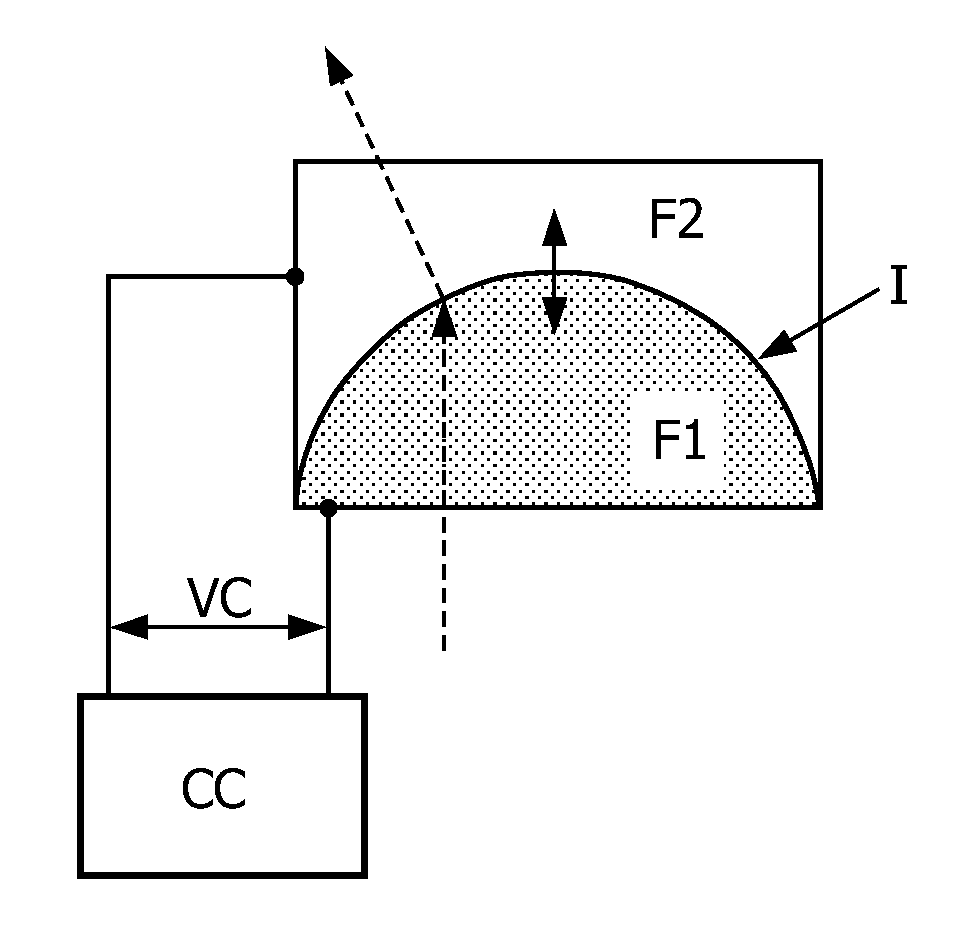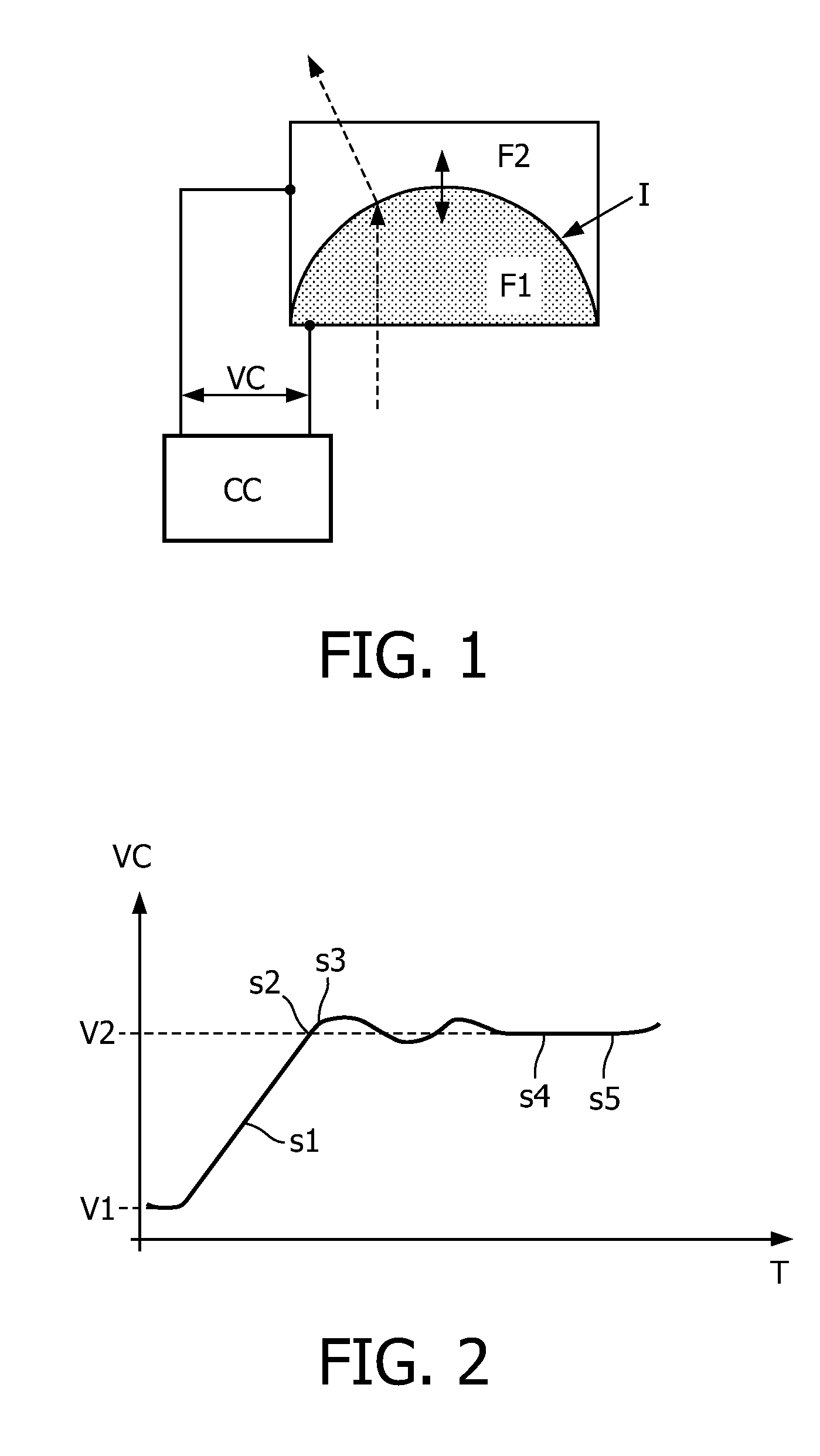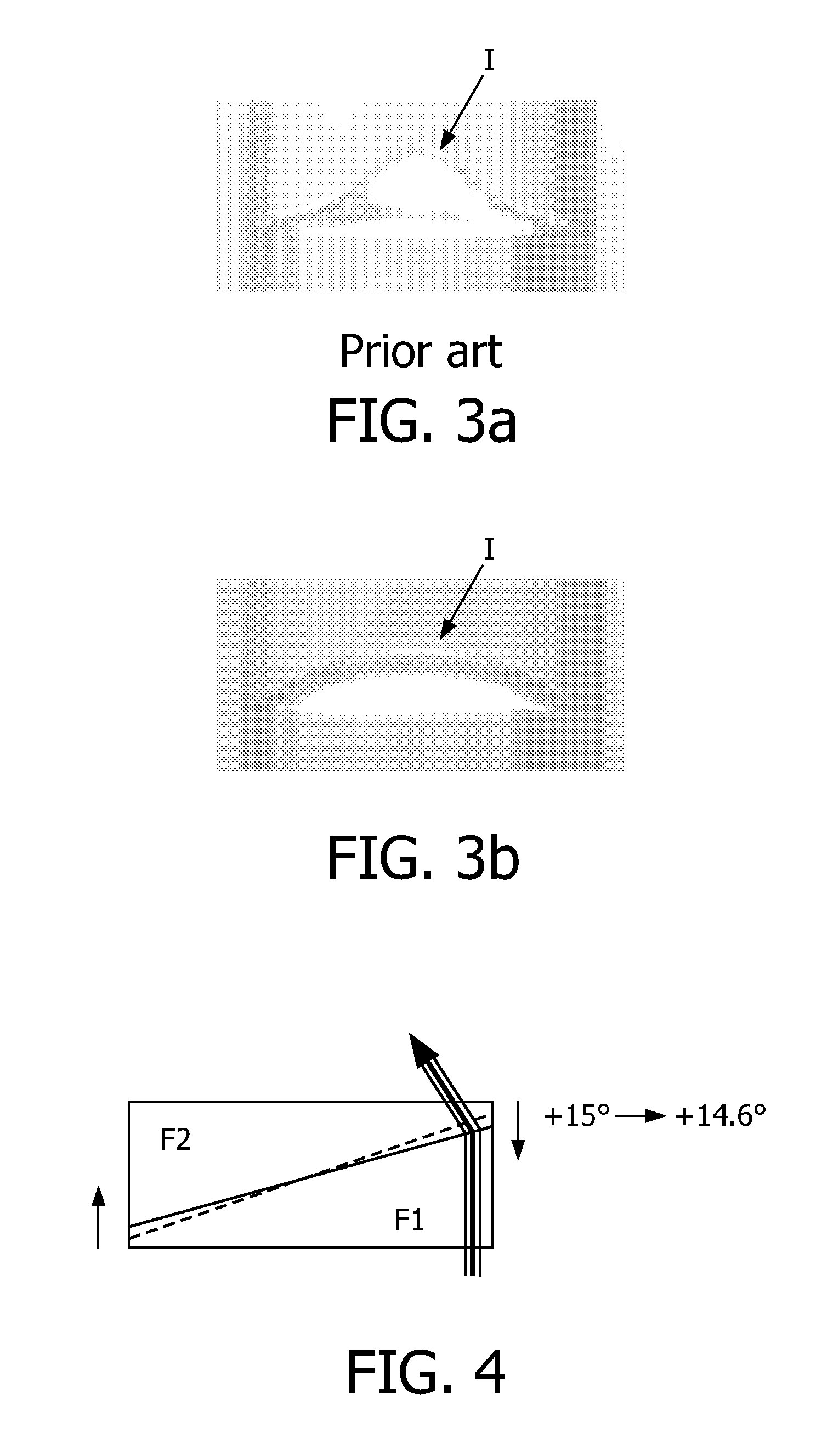Adjustable lens system for real-time applications
a lens system and real-time application technology, applied in the field of lenses, can solve the problems of unsuitable the fluid refractive interface taking uncontrollable shapes, and the general inability to record real-time images or video sequences, and address the problem of real-time recording of images through optical devices
- Summary
- Abstract
- Description
- Claims
- Application Information
AI Technical Summary
Benefits of technology
Problems solved by technology
Method used
Image
Examples
Embodiment Construction
[0050]FIG. 1 illustrates a sketch of a lens system embodiment where a first fluid F1 and a second fluid F2 are arranged in direct contact at an interface I, in other words a fluid lens. One fluid should be conductive while the other fluid should be insulating. In the illustrated embodiment, the fluids F1, F2 are arranged in a container such that the interface I has a shape which is rotational symmetric around an axis, namely such that the fluids F1, F2 are arranged in a meniscus shape, with the interface I having a spherical shape. The double-arrow indicates possible movement of the interface I which allows adjustment of the refraction of incoming waves (one ray is illustrates by the dashed arrow). A control circuit CC applies a voltage VC to the lens via electrodes (not expressly illustrated). A first electrode is in contact with the electrically conductive fluid while a second electrode is behind an isolating layer covering the inner wall(s) of the lens. Thus, the lens utilizes th...
PUM
 Login to View More
Login to View More Abstract
Description
Claims
Application Information
 Login to View More
Login to View More - R&D
- Intellectual Property
- Life Sciences
- Materials
- Tech Scout
- Unparalleled Data Quality
- Higher Quality Content
- 60% Fewer Hallucinations
Browse by: Latest US Patents, China's latest patents, Technical Efficacy Thesaurus, Application Domain, Technology Topic, Popular Technical Reports.
© 2025 PatSnap. All rights reserved.Legal|Privacy policy|Modern Slavery Act Transparency Statement|Sitemap|About US| Contact US: help@patsnap.com



